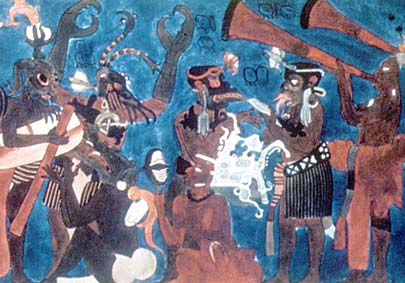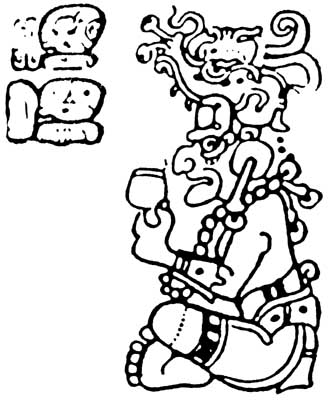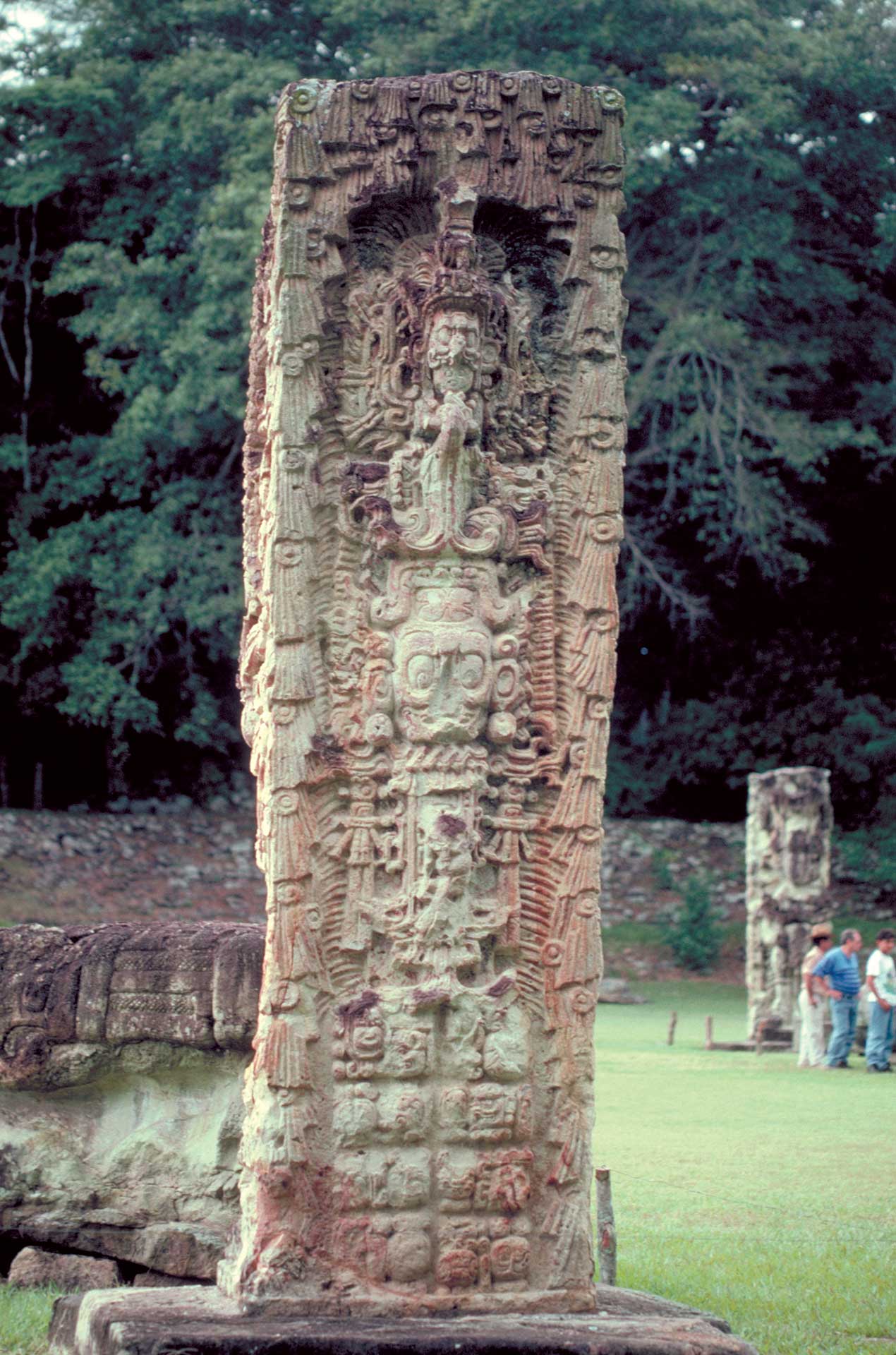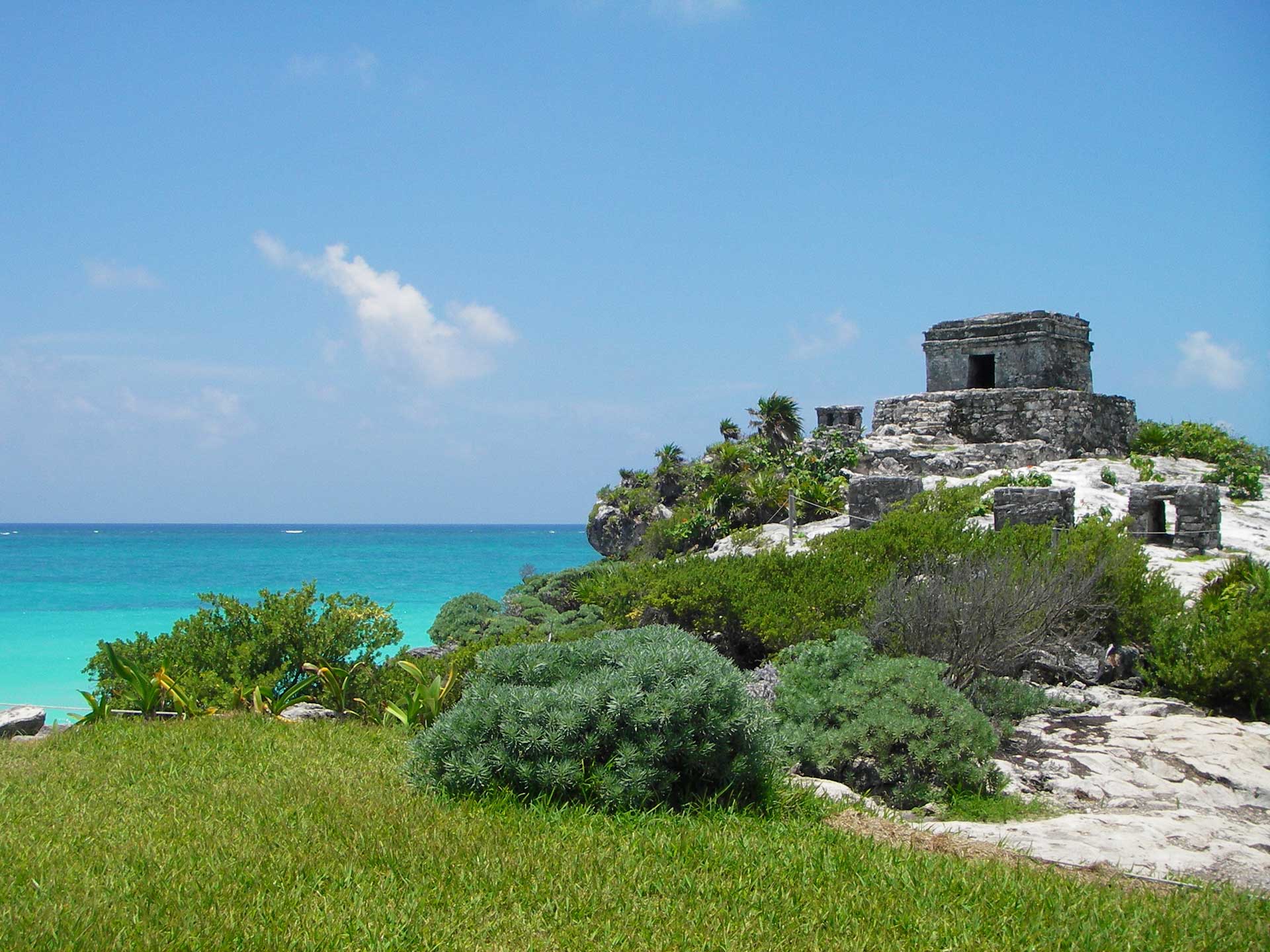 |
| Maya calendar |
Calendar from the Maya civilization, which thrived during the third to 10th centuries. The calendar was highly accurate and was based on complex mathematical and astronomical calculations. [Corel]
The story of the people known as the Maya stretches back more than 3,000 years. Within the forests and jungles of Central America, for many years there flourished a civilization whose accomplishments equaled many of the most impressive achievements of the better-known civilizations of ancient Europe and Asia.
Maya civilization was not organized under one unified empire but rather was a set of separate political and social entities with a common cultural background. Linguistic evidence suggests that the Maya did not even all speak the same language, although the various Mayan languages were all related to each other.
Physical Setting
 |
| Maya ruins at Uxmal |
Pyramid of the Magician (also known as the Pyramid of the Soothsayer) at the Maya city of Uxmal in Mexico’s Yucatán Peninsula. At its peak, between 600 and 900 CE, Uxmal was home to a population of 25,000. This and other structures feature carvings of Chaac, the god of rain, the most important deity to a people dependent on agriculture.
The territory occupied by the Maya included three main areas:
- The highlands of what is now southern Guatemala: this area was heavily influenced culturally by Mexico and is sometimes not considered part of the true Maya territory.
- The central area of the Guatemalan lowlands: this was the most developed and populous area of Maya civilization.
- The Yucatán Peninsula, which was also lowlands: this area was a source of salt, honey, cotton fabrics, slaves, and other specialized goods for other parts of the Maya region. After the abandonment of the Maya cities in the central area, this area became the principal site of a cultural blend known as the Toltec-Maya.
One of the challenges of the Maya territory was growing enough food to feed everyone. In many areas, slash-and-burn agriculture was the only possible method, with farmers burning the forest, planting a crop—usually for only two years—and then letting the ground lie fallow for a number of years until the fertility of the land was restored. Other methods of agriculture included raised plots, terraced fields, and house gardens, all of which could be farmed year after year. However, those areas were limited, and those methods all required much more intensive labor.
Rise of Maya Civilization
 |
| Fresco at Bonampak |
The ruins of the city of Bonampak (“Painted Walls”) were discovered in 1946 in what is now Chiapas, Mexico. Painted in about 785 CE, the scenes depict a victory of the king Yahaw Chan Muwan of Bonampak and the resulting festivities, which include ritual mutilation and human sacrifice. The murals played a large role in changing scholars’ perceptions that the Maya were a predominantly peaceful people.
By 1000 BCE, and probably earlier, the Maya were already practicing a form of village-based agriculture and growing corn, beans, chili peppers, and squash. Over the next several centuries, the population in the area grew, and the Maya began to develop larger community centers. By 200 CE, those centers featured temples, pyramids, palaces, and more—the beginning of the famed cities of the Classic Period.
The Classic Period of Maya culture began in about 250 CE and lasted until about 900 CE. Technically, it is considered to begin and end with the use of a particular calendar system (the “Long Count”) in stone inscriptions. More generally, it was the period when the great Maya cities, which could have populations in the tens of thousands, and their culture were at their height.
It was once believed that the Maya cities were relatively peaceful, largely independent, mostly cultural and trade centers rather than centers of political power. Today the picture is very different, thanks in large part to the decipherment of Maya writing by David Stuart, the world’s leading expert on the written language of the ancient Maya. It is now known that each city-state was ruled by a hereditary line of kings and that the cities fought with each other for territory and power. Historians currently believe that the Maya never consolidated their territory into a single state; during certain periods, however, individual cities might have established control over a large region—dominating other cities and their rulers.
Cultural Accomplishments
 |
| Itzamná, principal Maya god |
Line art drawing after a figure in a Maya manuscript depicting Itzamná, the principal deity of the Maya.
For many years, scholars believed that the Maya produced their cultural achievements in isolation. More recent archaeological discoveries, however, have confirmed that the Maya shared a variety of basic characteristics with other civilizations in the area. For example, the famous Maya calendar—perhaps the most accurate one known to the ancient world—was actually based on a system developed by the Olmec, prior to the Maya Classic Period, and shared with other cultures in Mexico. The Maya did apparently bring the calendar system to its highest point of development, which has made it possible to date events from the Classic Period with a precision that is impossible for many other ancient civilizations.
The Maya also were accomplished architects and builders. The step pyramids of the Maya are probably their best-known structures. Maya construction skills are evident as well in their carved monuments, palaces, and ball courts.
 |
| Maya stela at Copán |
Stela at the Maya ruins in Copán in present-day Honduras. Stelae are upright, inscribed stones used as monuments, gravestones, or markers.
Religion was an important part of Maya life. The rulers and a class of priests practiced a variety of religious rituals, including bloodletting and human sacrifice. The Maya religion was a complex set of myths and beliefs featuring many different gods drawn from nature. Itzamná, the principal Maya god, ruled over the rain, sun, and moon deities, as well as such other gods as the Bacabs, who held up the sky, and Kukulcán, the feathered serpent (worshipped as Quetzalcóatl in other Mesoamerican cultures).
It is now known that the Maya used the most advanced system of writing that has yet been found in the New World. Nearly all the pleated books they created were destroyed by the Spanish conquests, but a few remain, together with inscriptions on stone stelae and other more permanent media. Maya astronomy and mathematics were also highly advanced, as were Maya arts and crafts, particularly pottery.
Trade between the Maya and their neighbors was extensive, particularly with the civilizations of central Mexico. Some of the most important Maya exports included cacao beans (from which chocolate is made) and feathers of tropical birds, which they exchanged for copper tools and ornaments. For the most part, the Maya conducted trade via sea routes, as roads within the Maya territory were generally not well developed.
Abandonment of the Maya Cities
 |
| Tulum |
Postclassic Maya city of Tulum on the Yucatan’s Caribbean coast. Tulum was an important part of the Mayan network of trade, providing a link between maritime and land routes. Unlike many inland Maya cities, Tulum was an active community up until the arrival of Spaniards in the early 16th century.
During the period from about 800 to 925, the Maya abandoned the great cities of the central Maya area—ending the Classic Period. Although cities continued to flourish in the Yucatán Peninsula, the great days of the Maya civilization were largely over. Archaeologists have advanced a variety of theories to explain what happened to the Maya civilization. A combination of factors that could have played a role include warfare between the Maya states, overpopulation and exhaustion of environmental resources (e.g., deforestation and erosion), and drought.
Nevertheless, descendants of the Maya people survived. Even today, more than a million people in regions of the Yucatán and Guatemala speak various Mayan languages.
Ellen Bialo
MLA:
Bialo, Ellen. “Maya Civilization (Overview).” The American Mosaic: The Latino American Experience. ABC-CLIO, 2011. Web. 28 Mar. 2011.